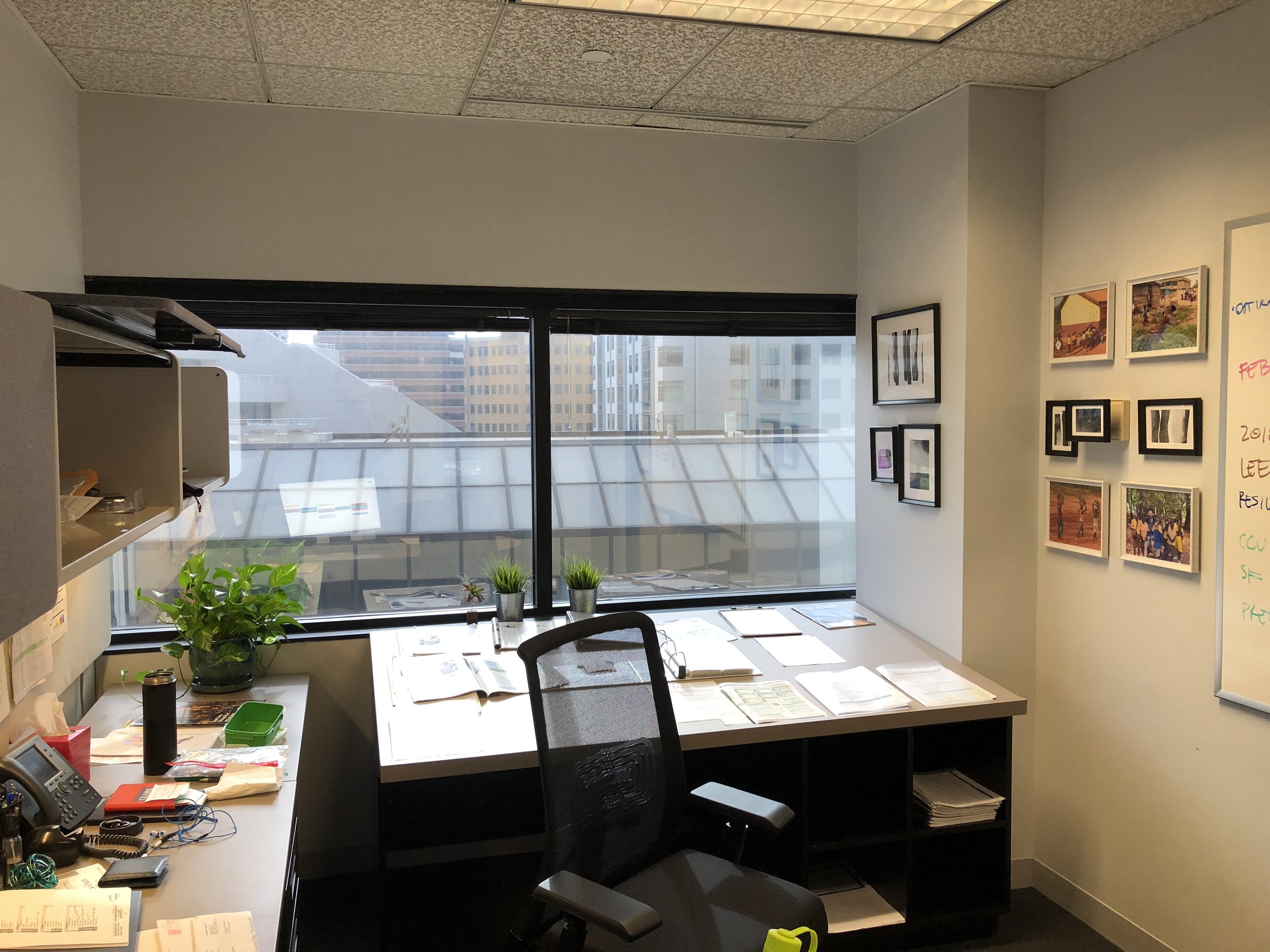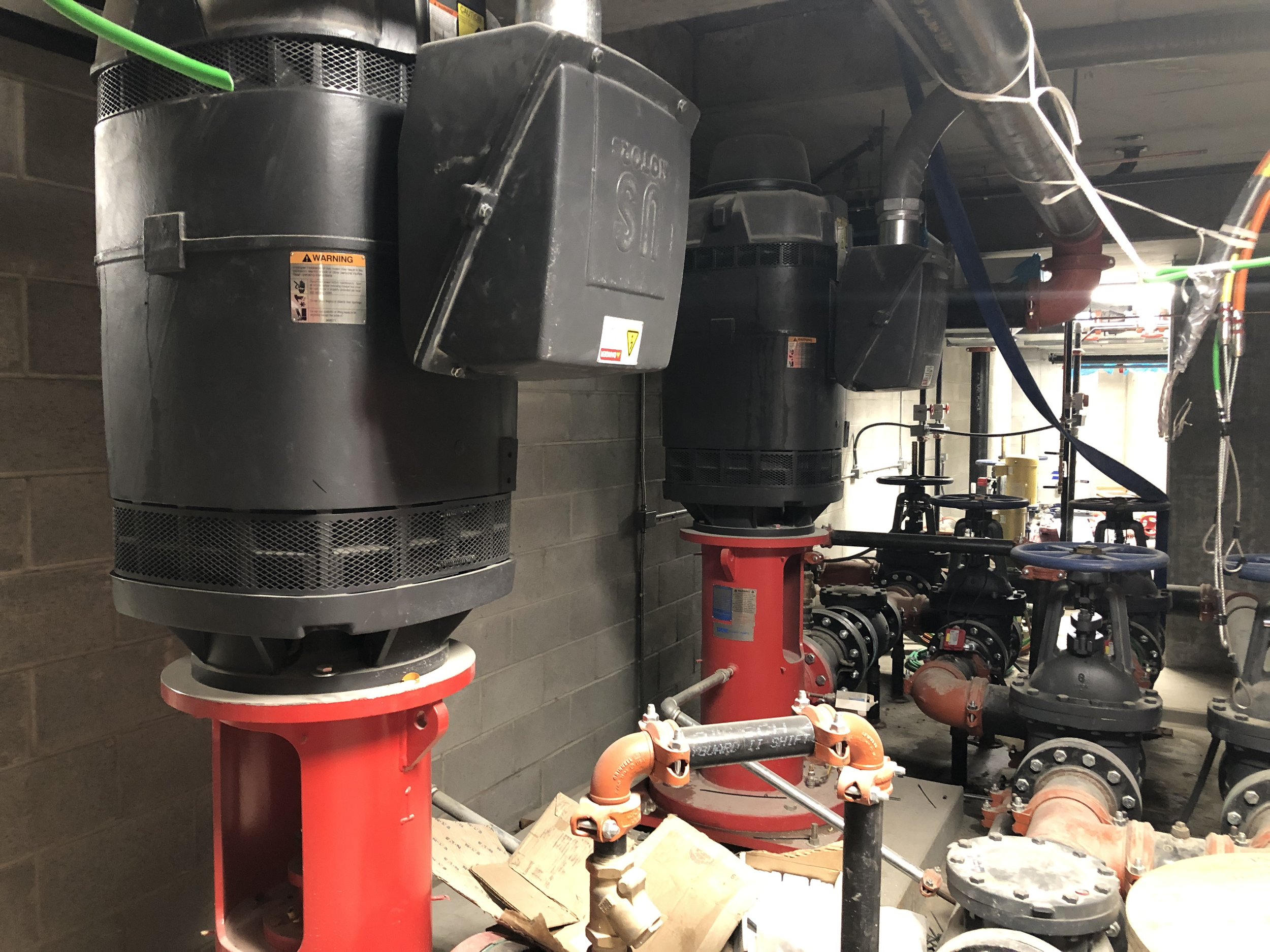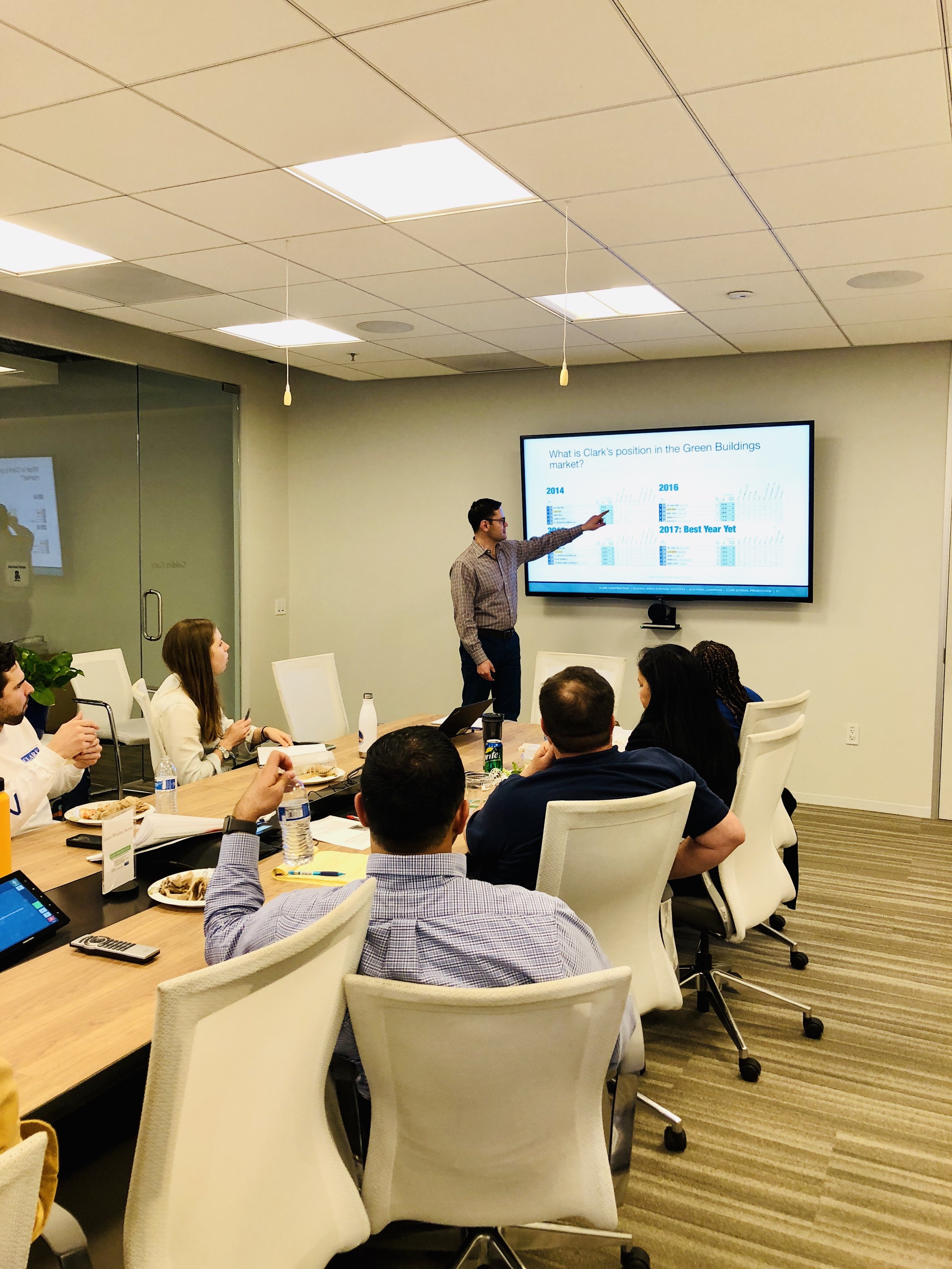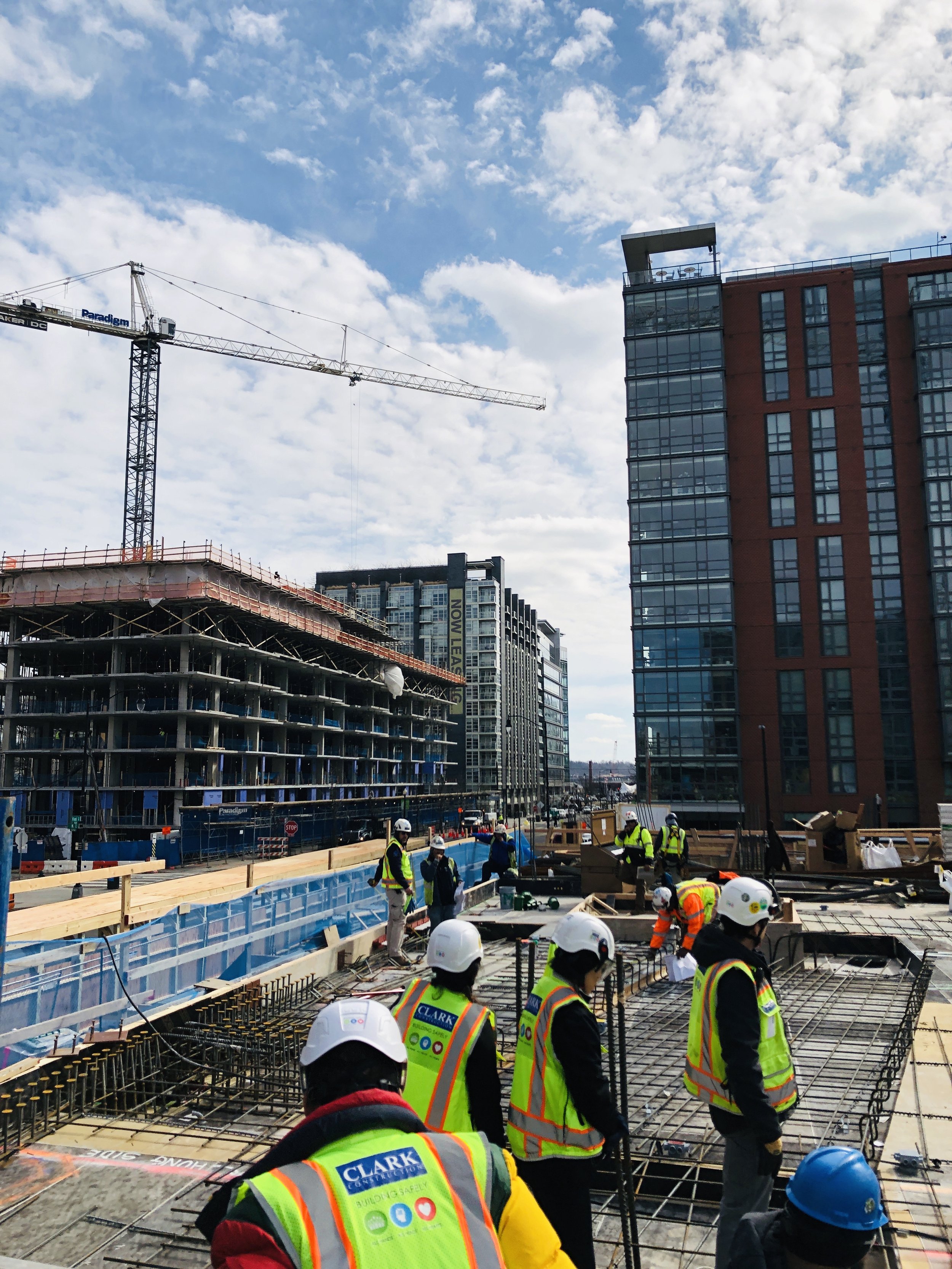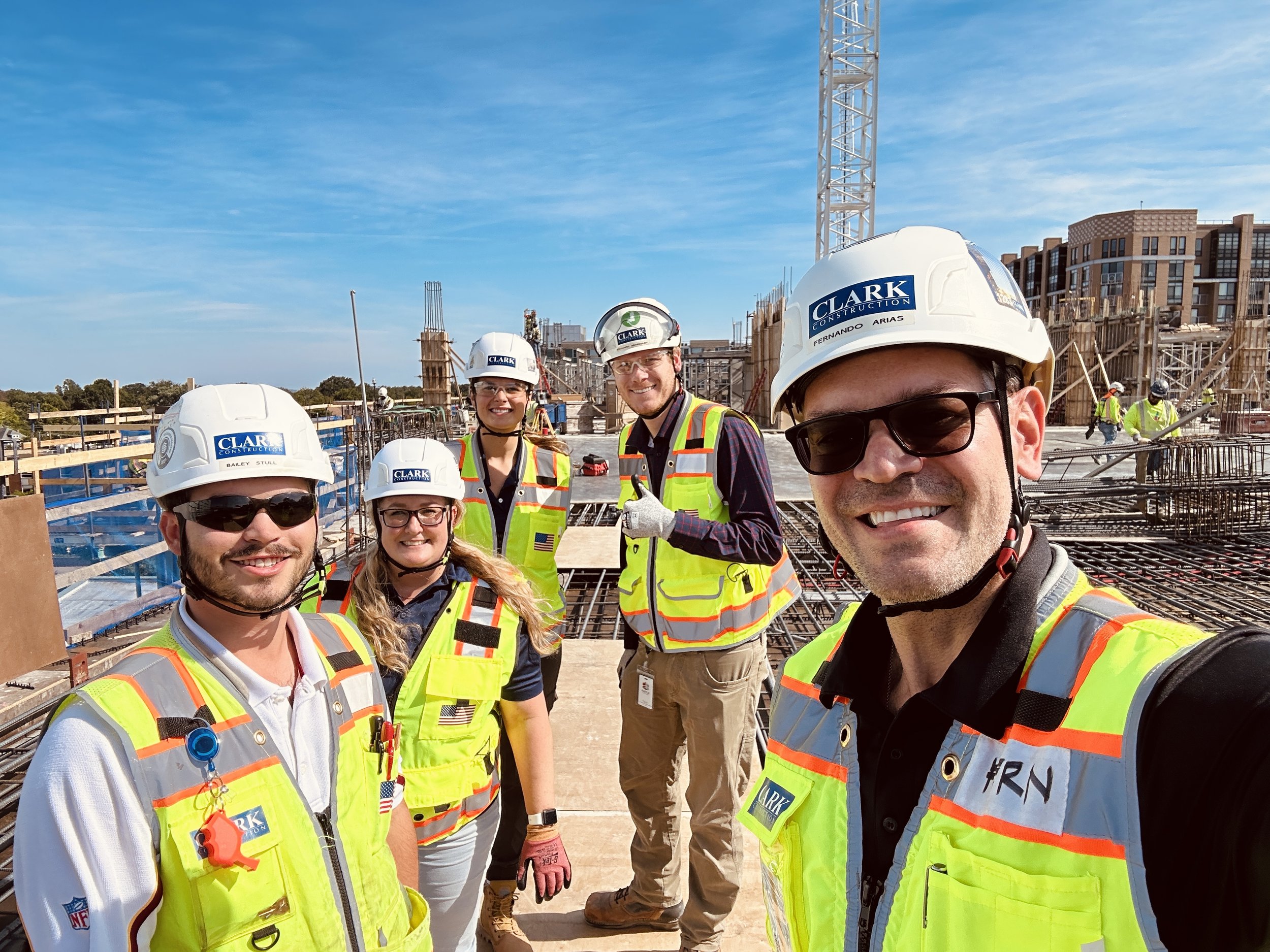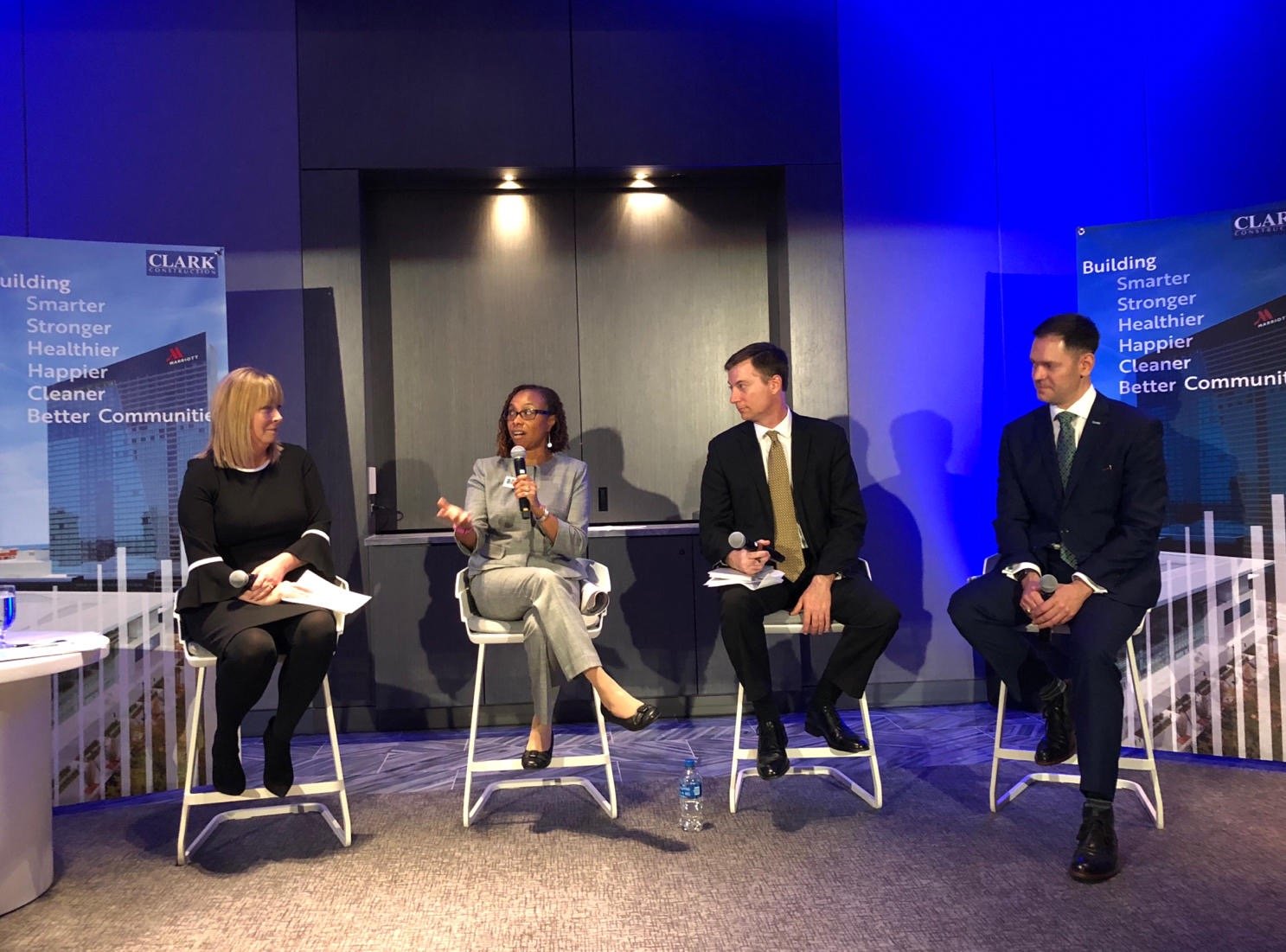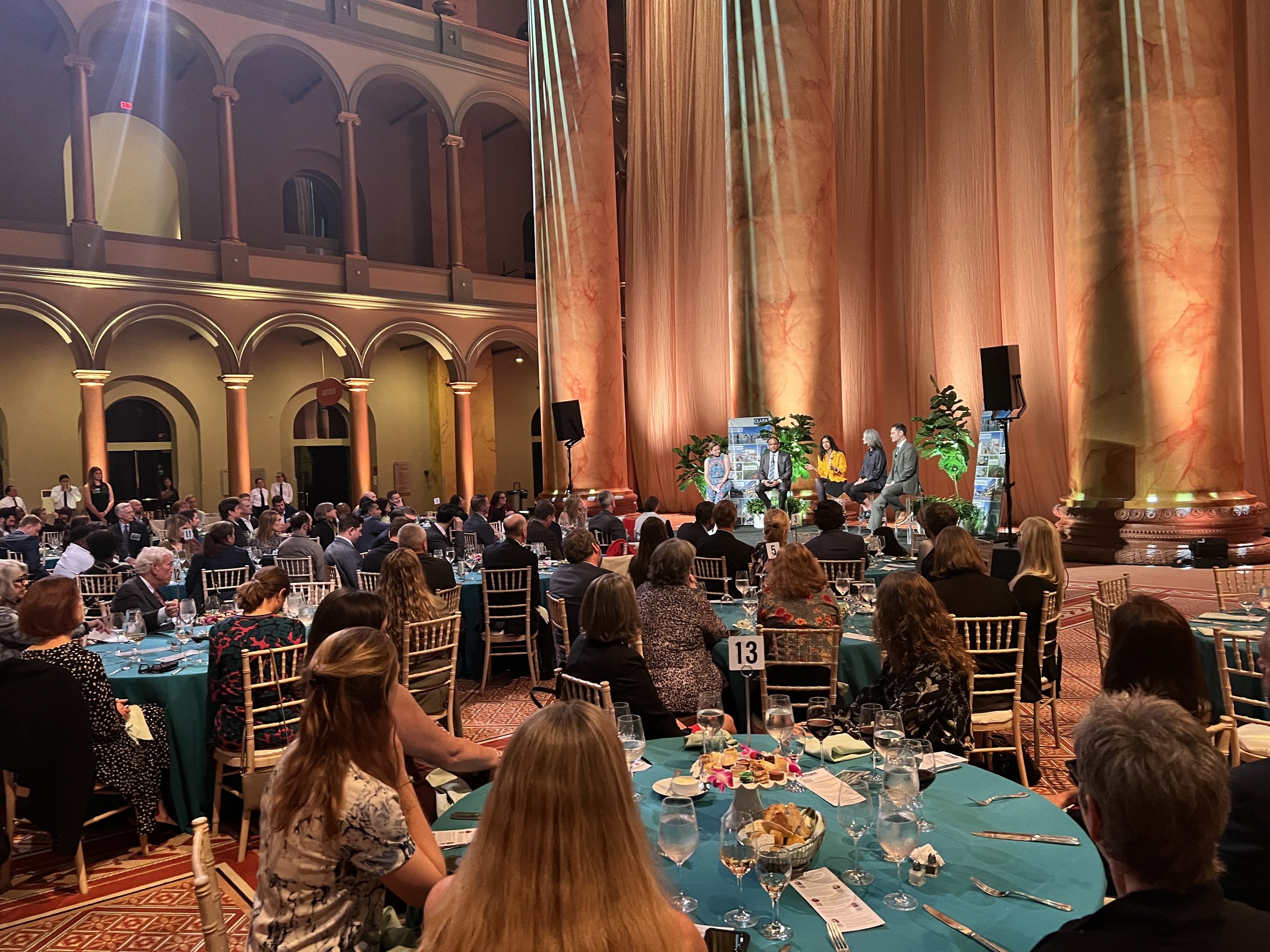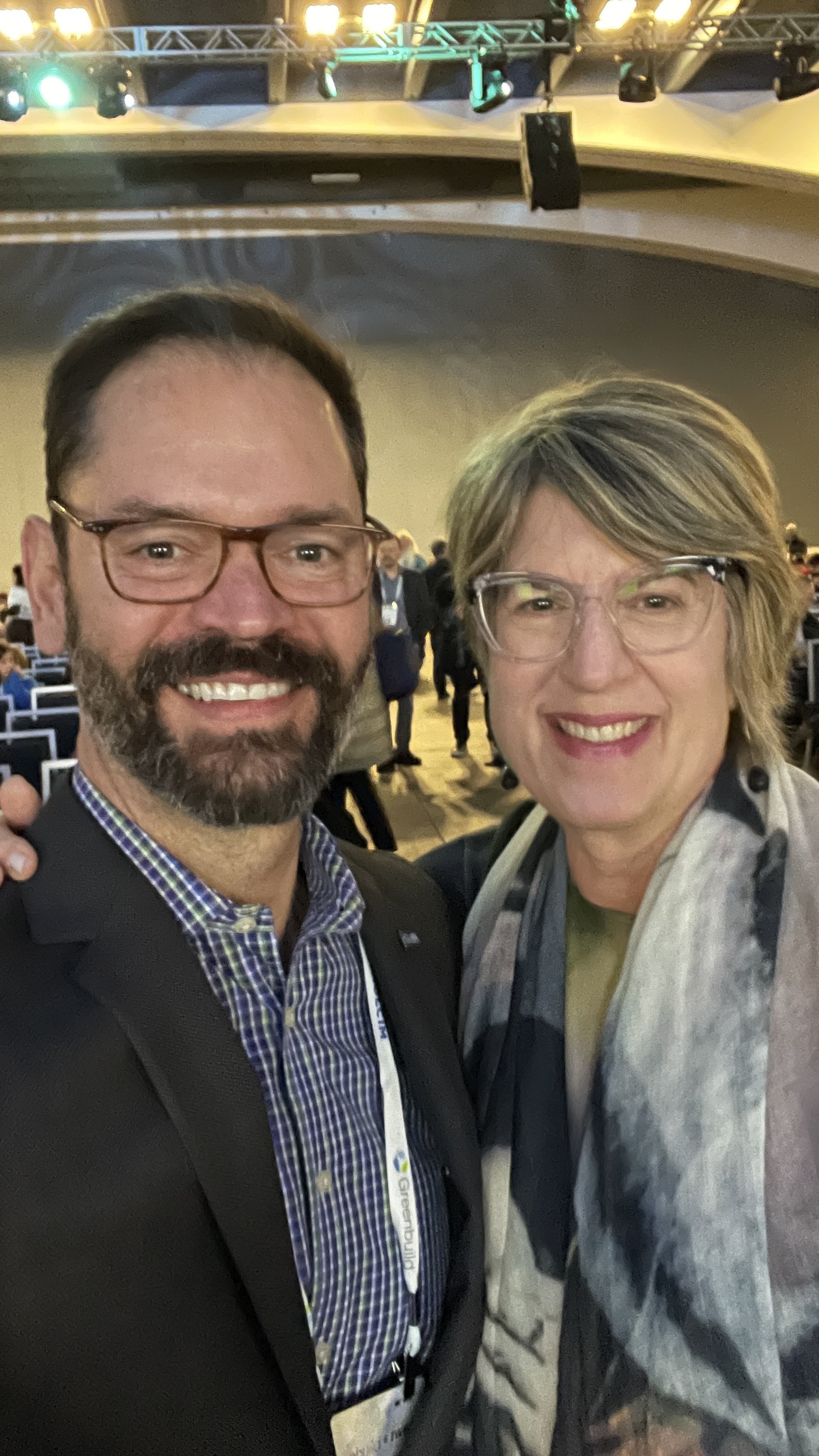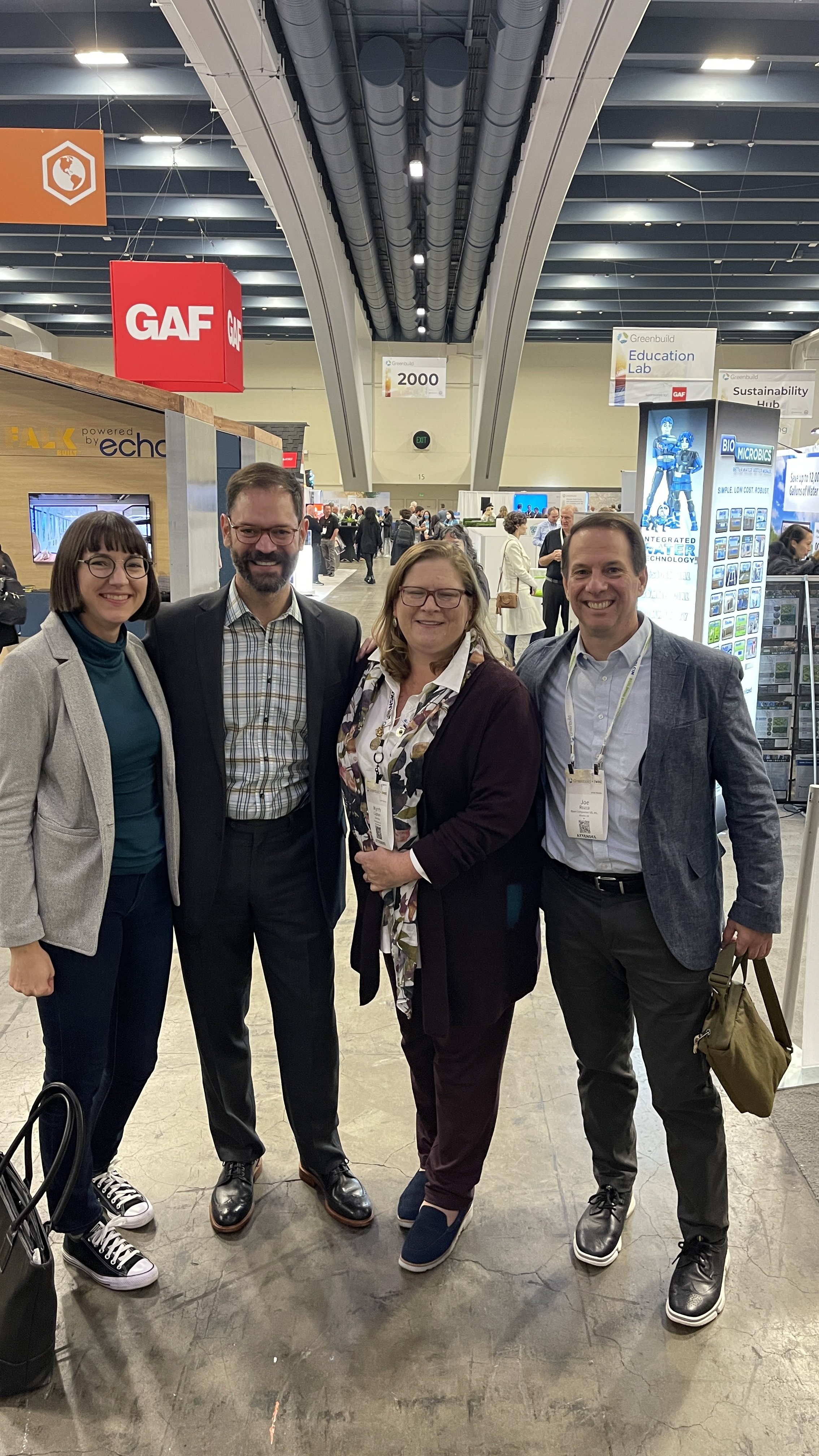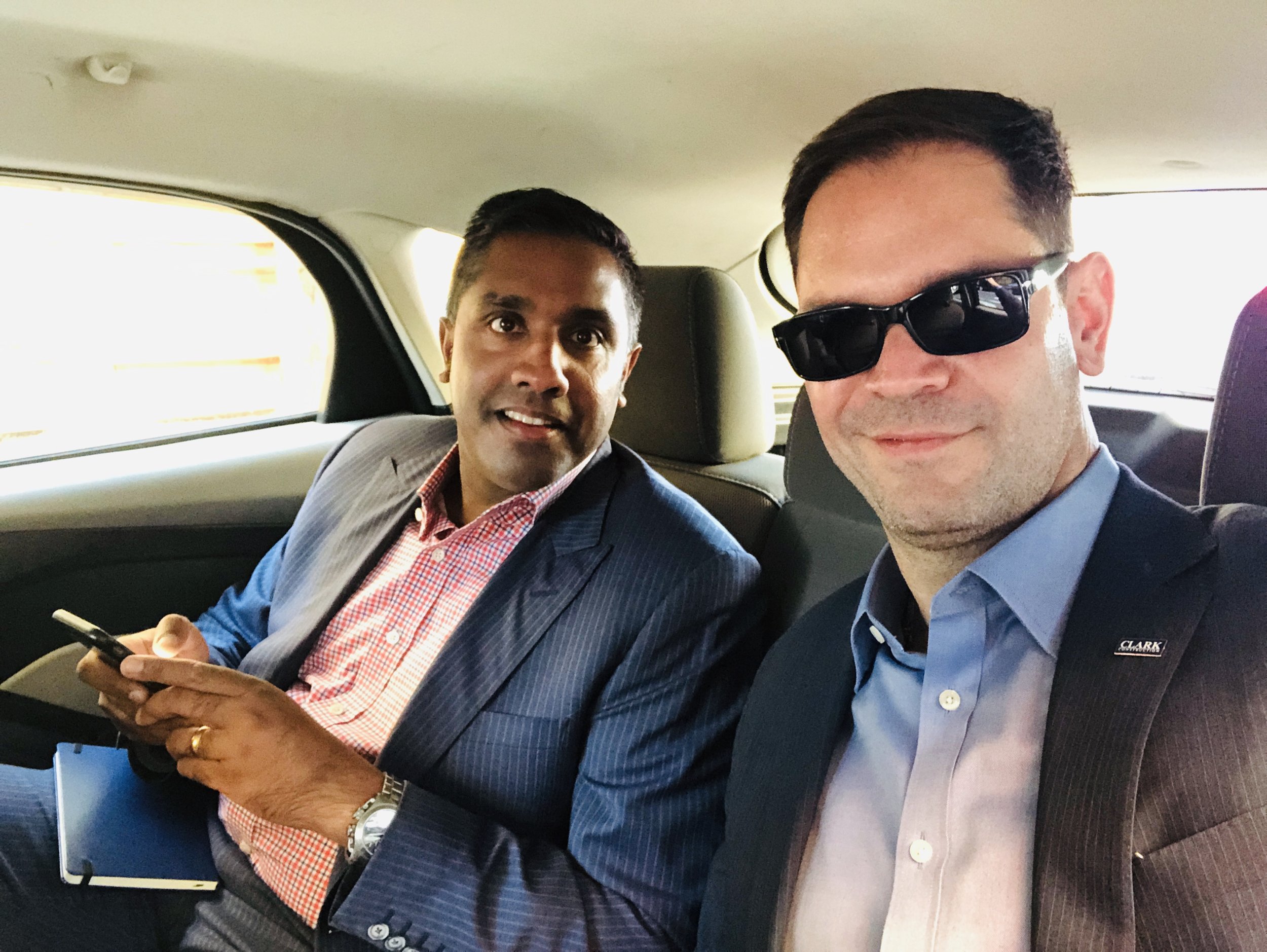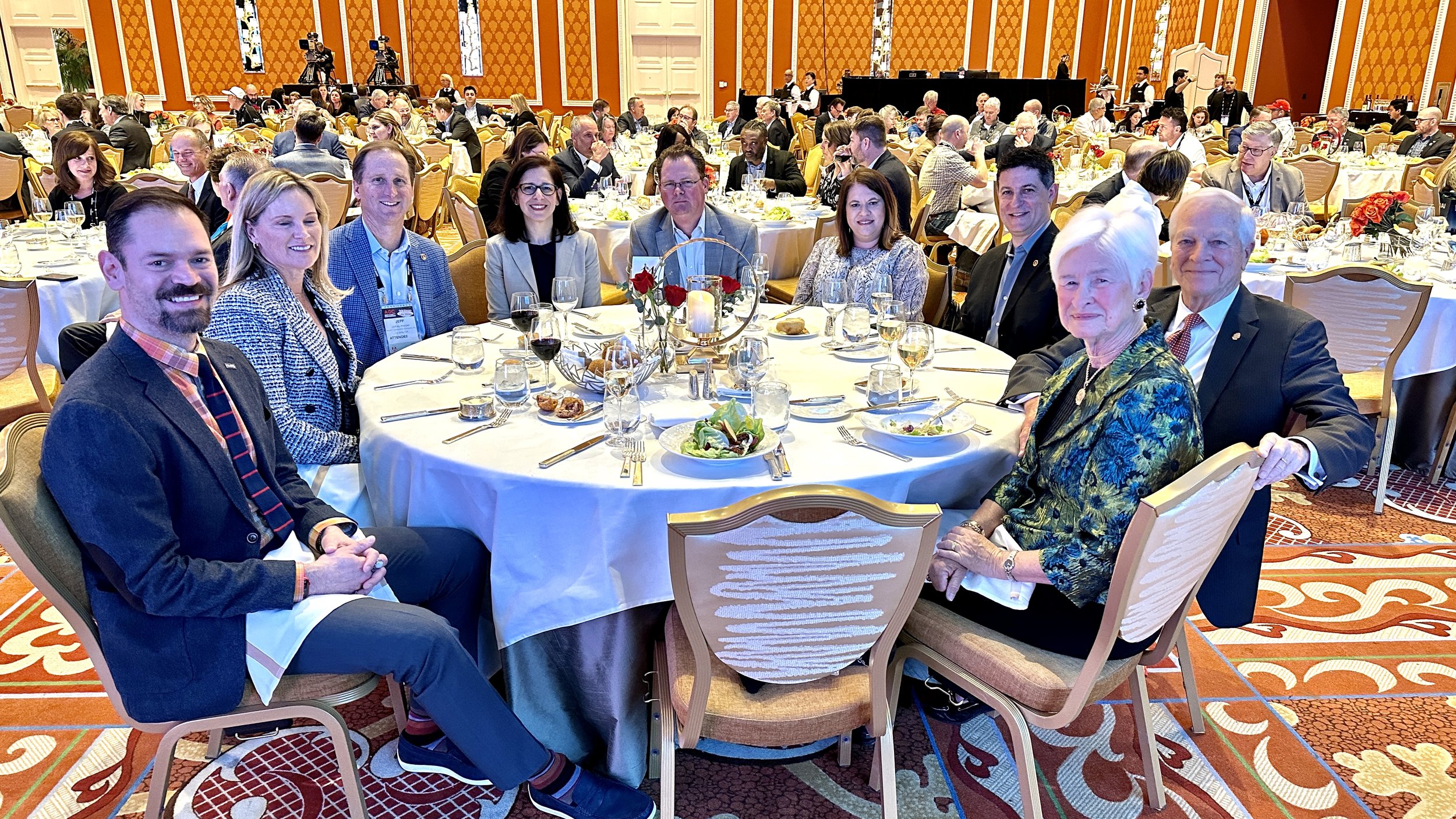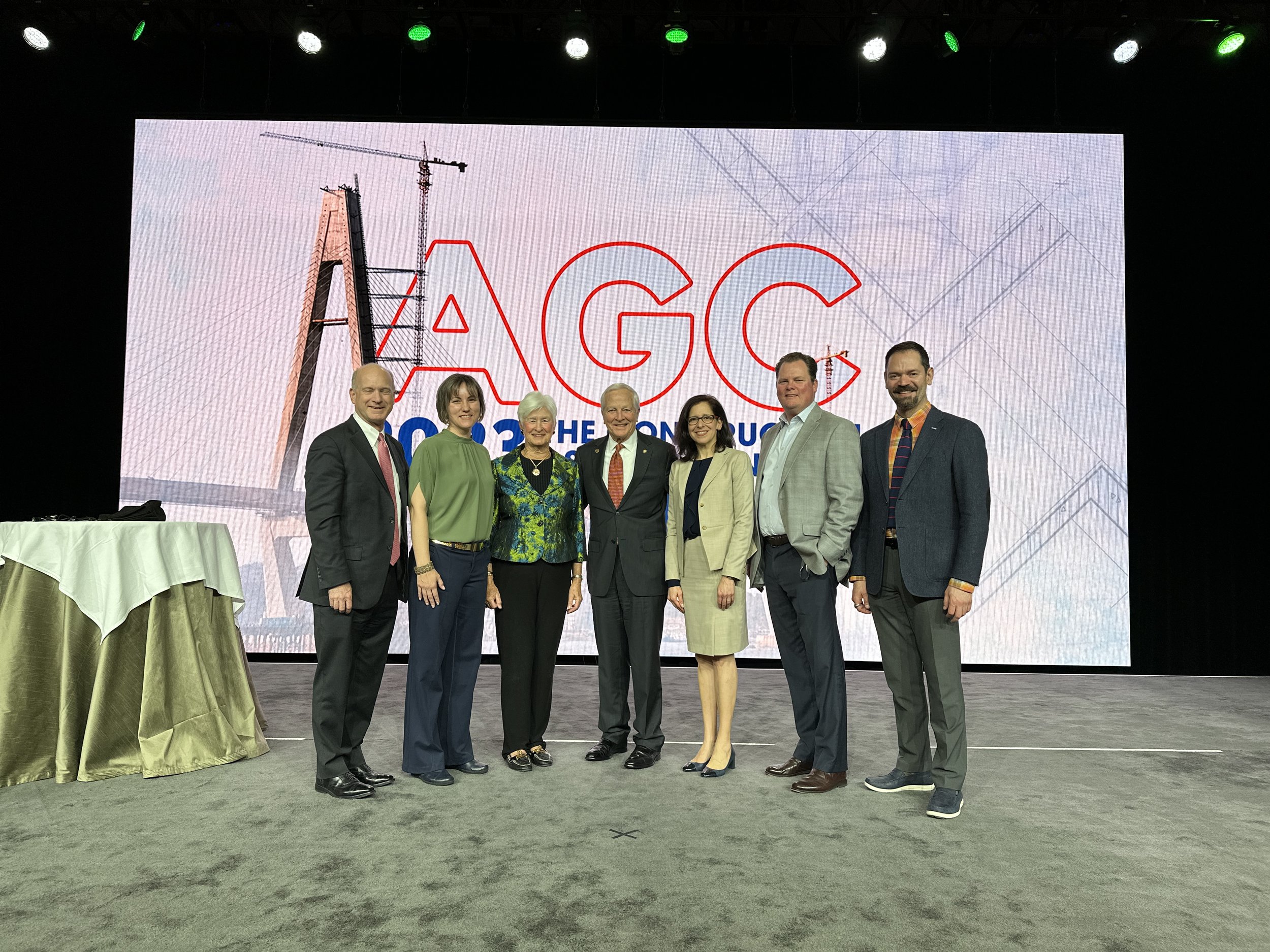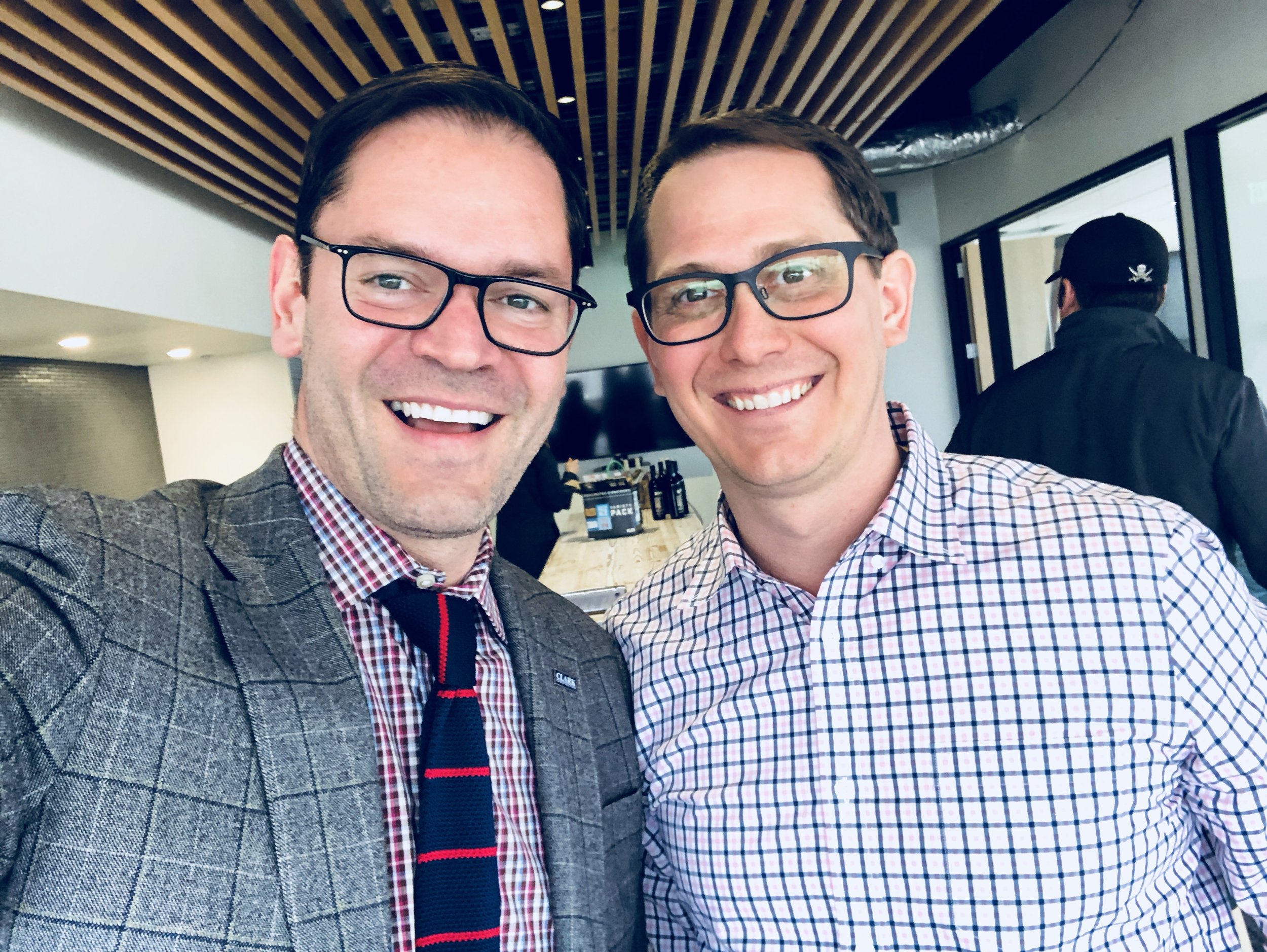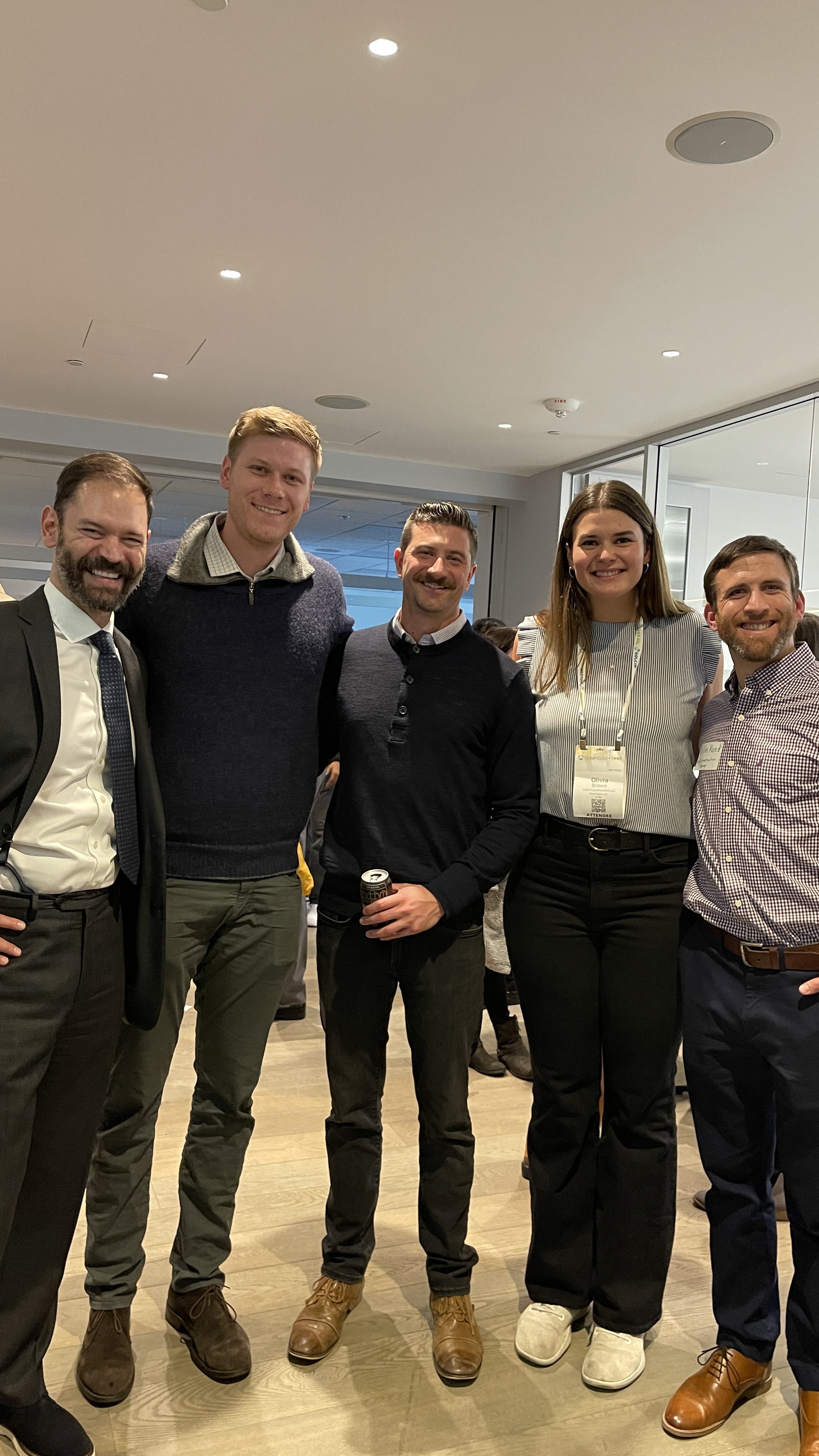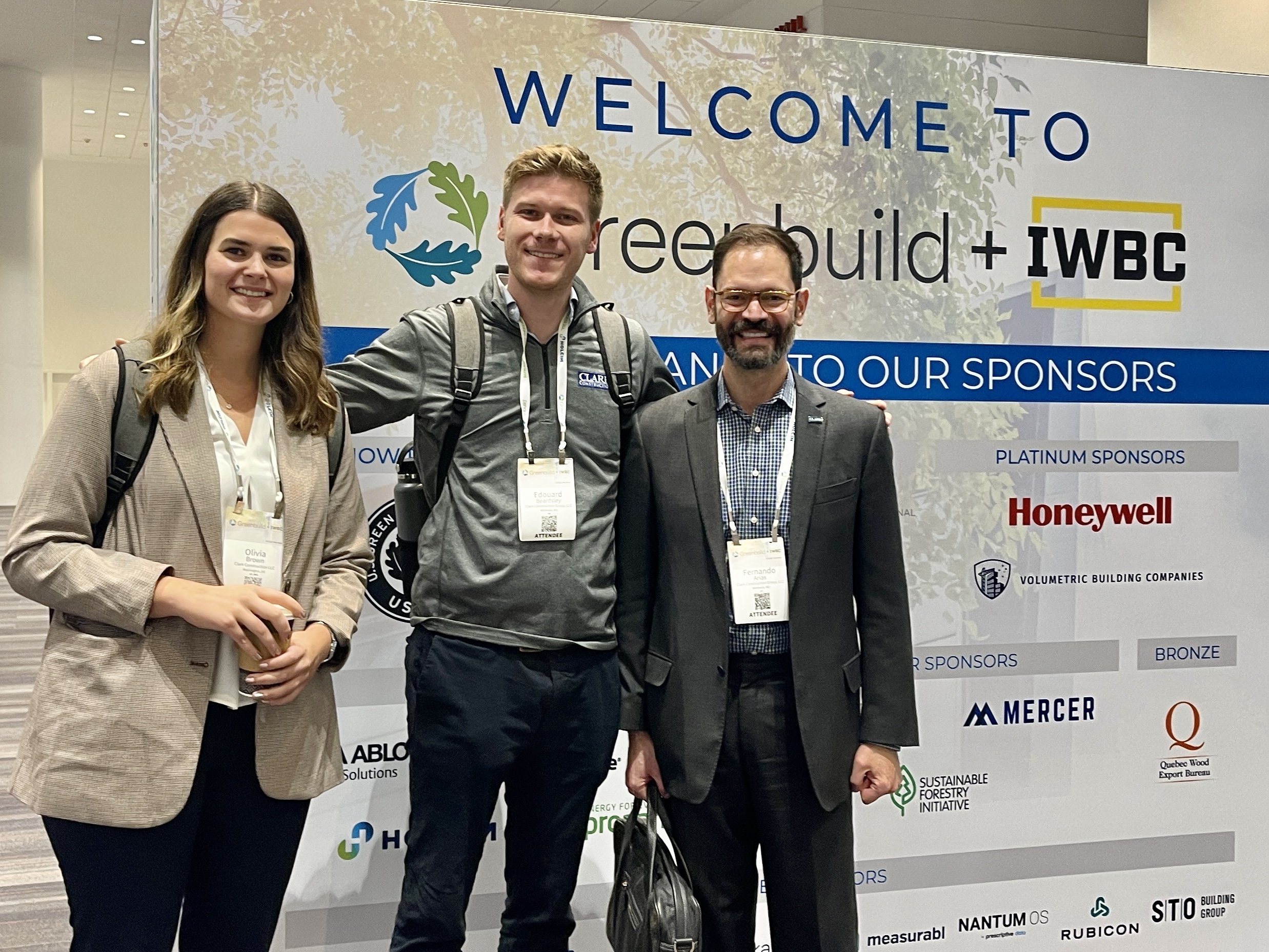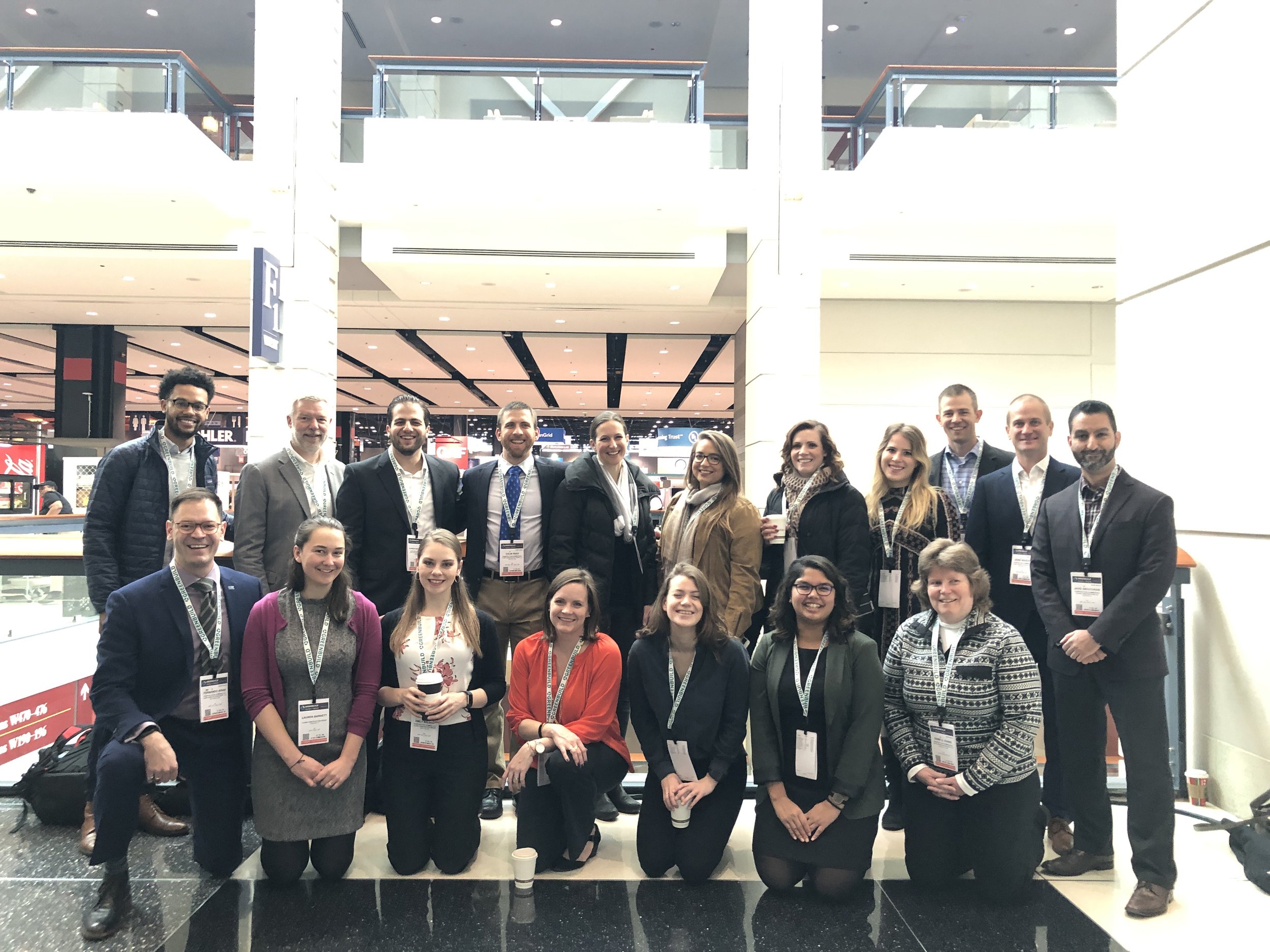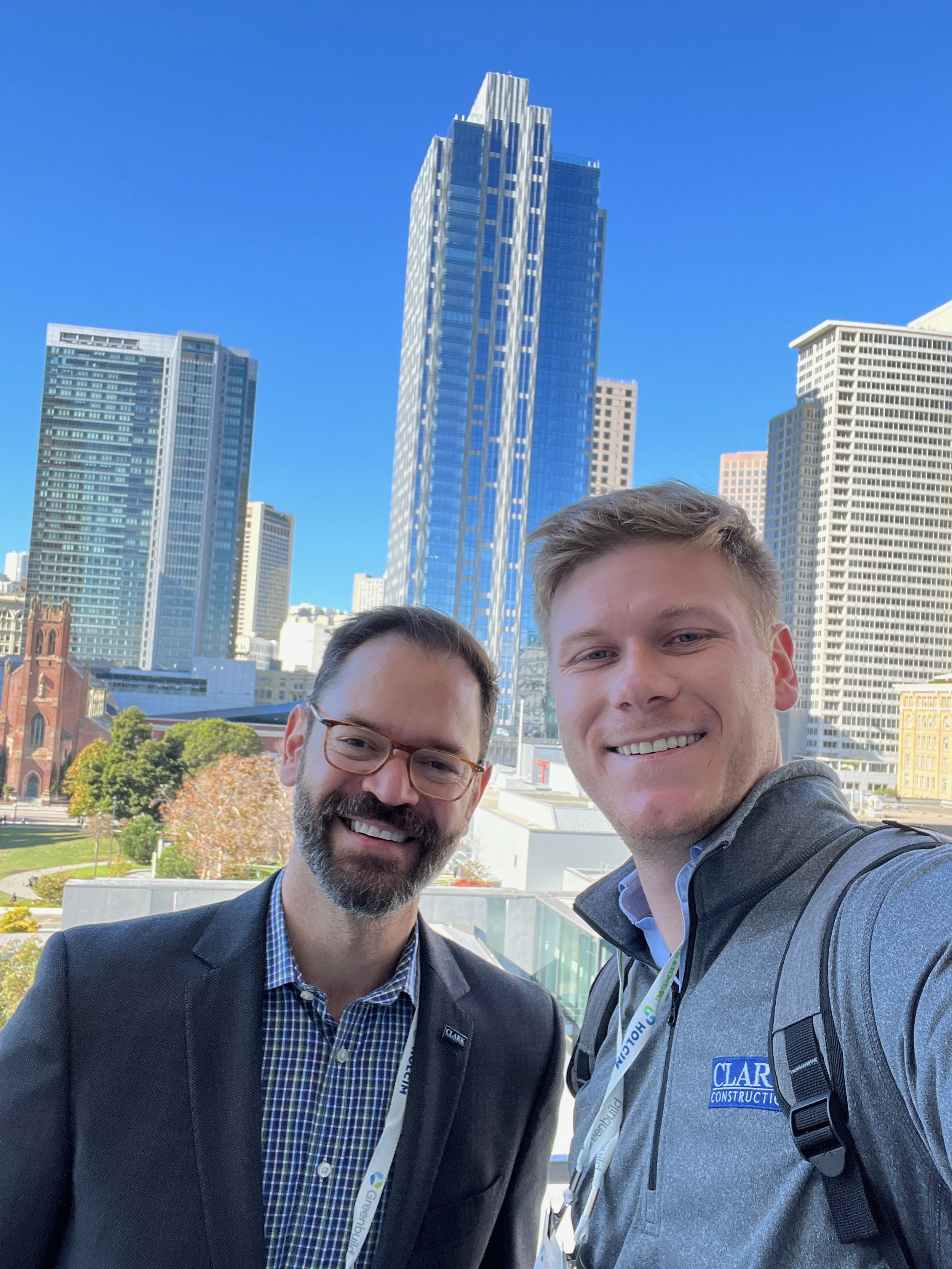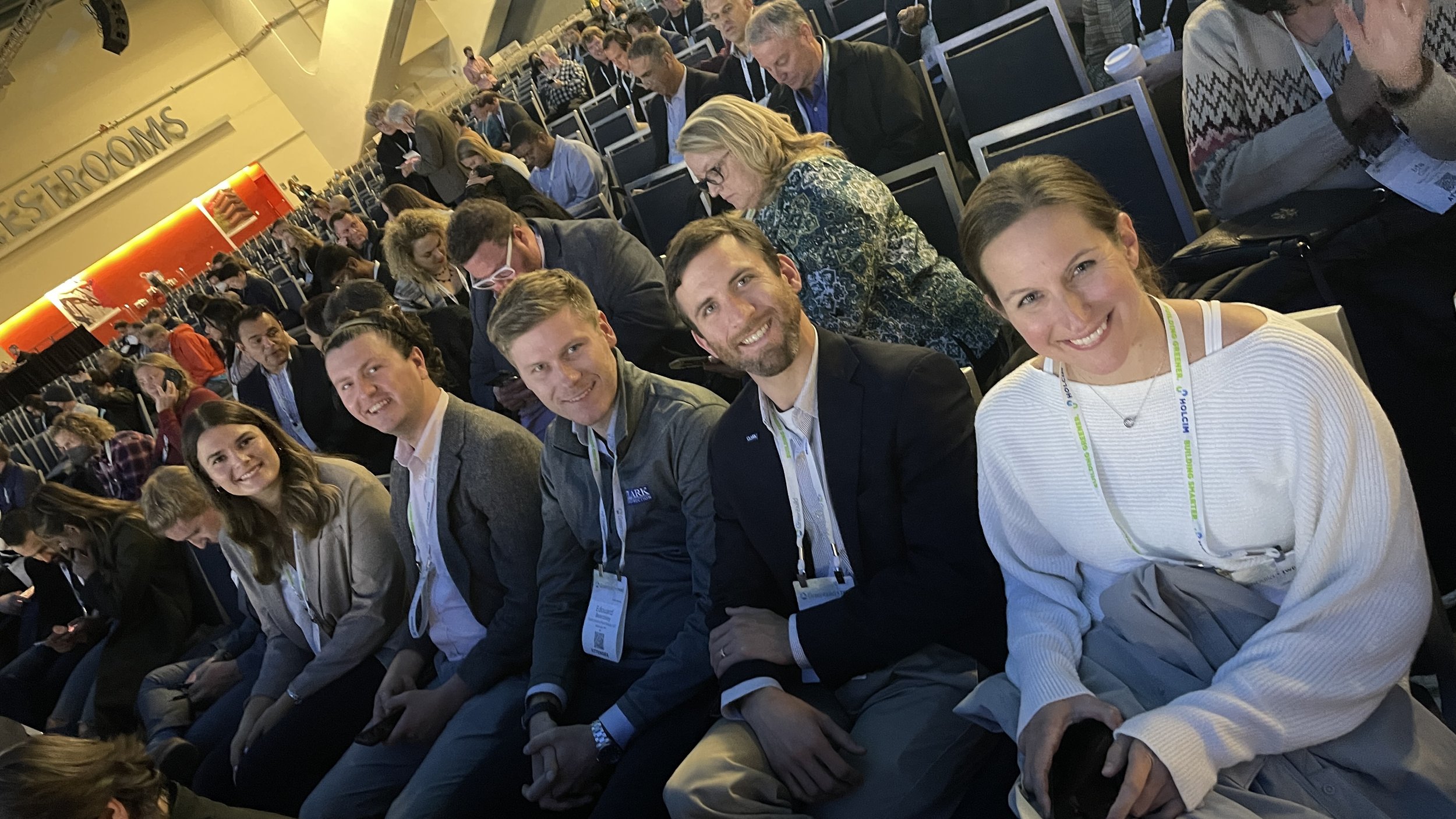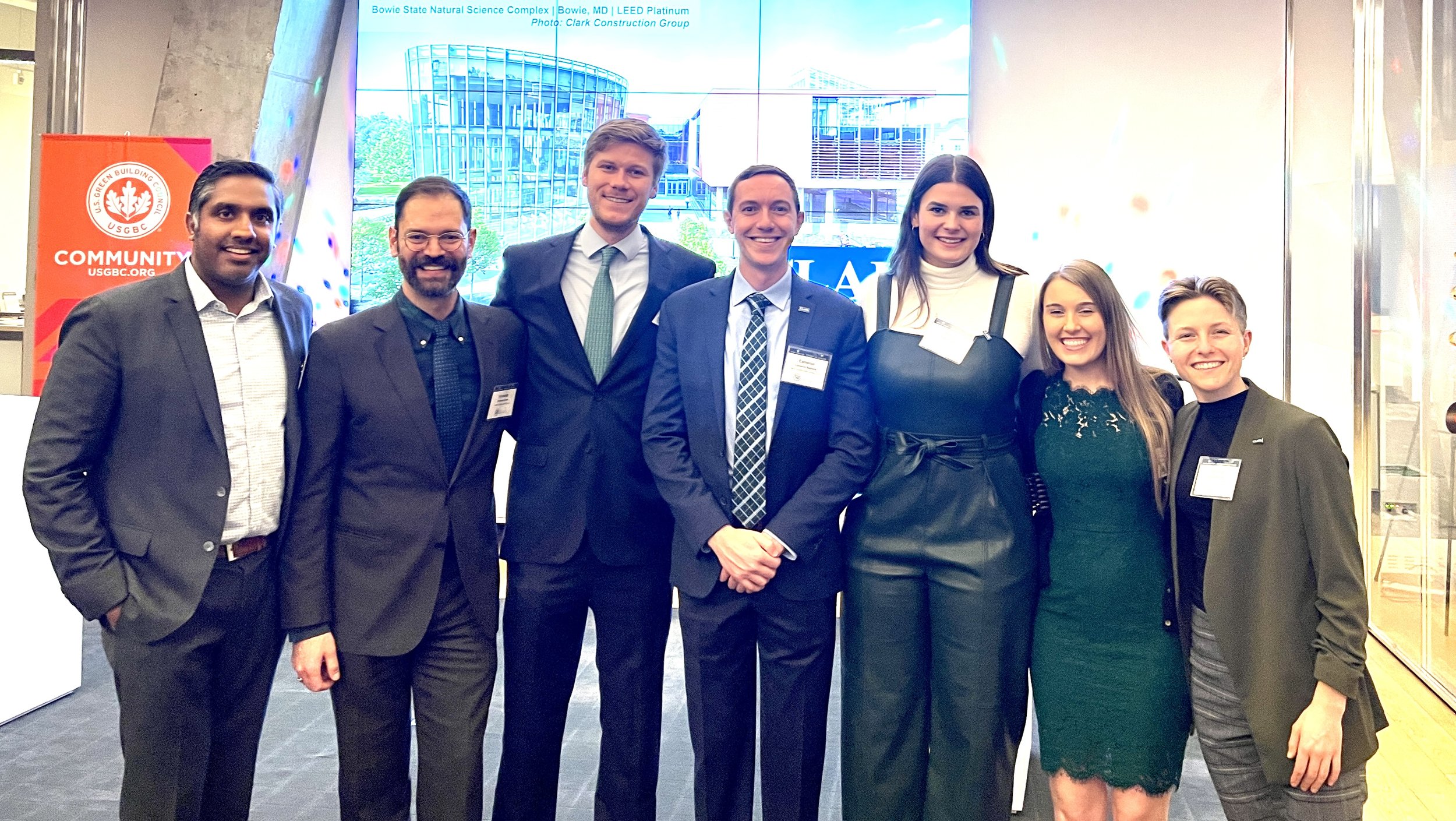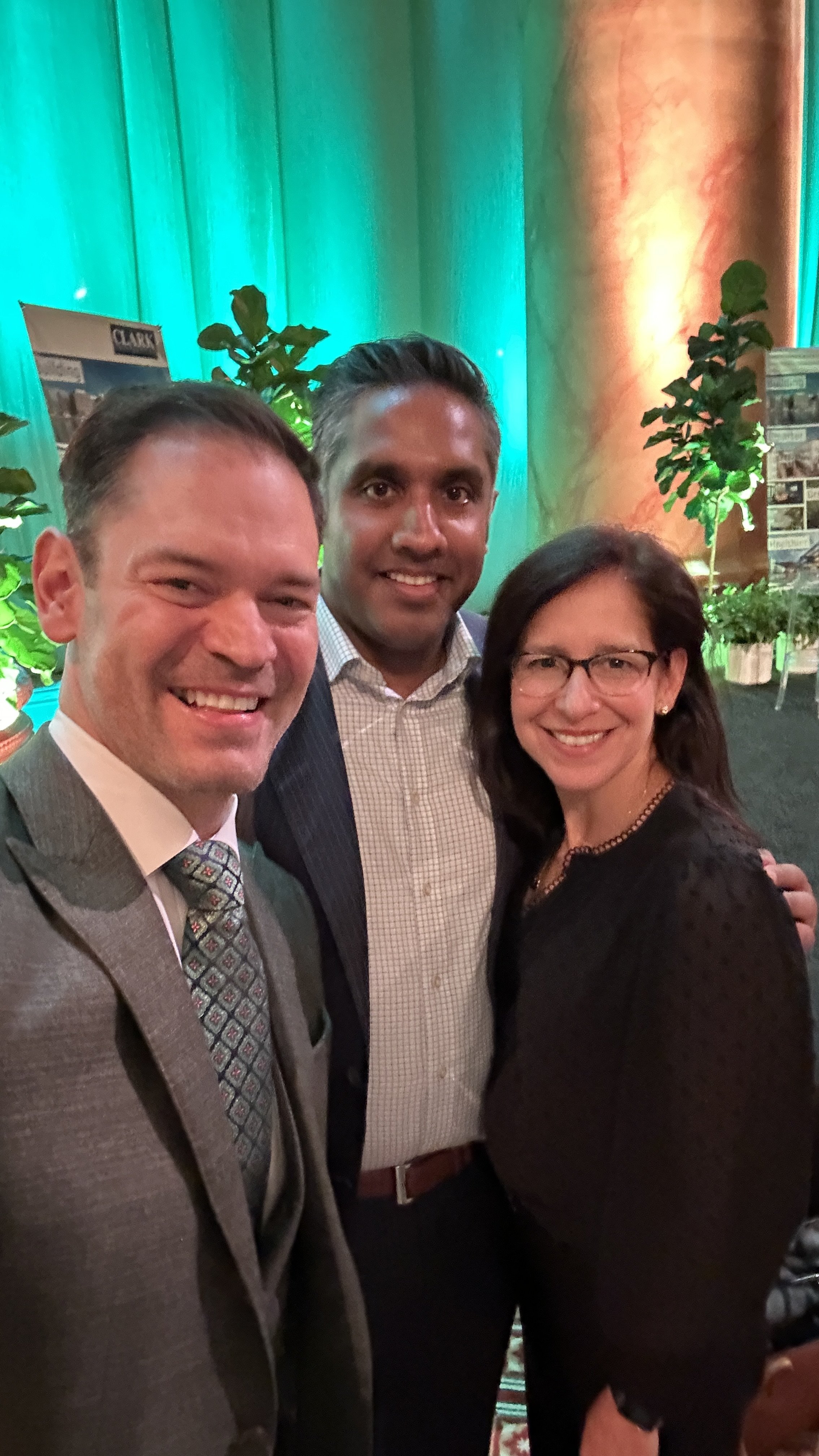Salute to the Construction Industry: Building a Sustainable Tomorrow
/Reflecting upon my six-year tenure at Clark Construction, I've witnessed seismic shifts in our industry. As Director of Sustainability, my mission was propelled by an indomitable will to transition towards a more sustainable, low-carbon future—both an environmental imperative and a financial opportunity.
In this evolving landscape, under the collective efforts of Clark and our industry partners, Clark has fortified its reputation as an innovator in green construction. Clark’s portfolio now encapsulates over 540 eco-conscious projects, sprawling across 1.18 billion square feet and valued at a staggering $53.8 billion. This is not just an impressive ledger; it's a monumental tribute to Clark’s shared commitment to progress.
And there were many highlights along the way to contributing to that portfolio and delivering 53 LEED projects and 11 LEED Campuses, including another 35 projects pending their final certifications in the months ahead – nearly 100 projects during those years. It’s a portfolio of projects that I am incredibly proud of.
Diving deeper into our journey, we developed many innovative solutions and initiatives throughout the years, including launching a proprietary cloud-based waste-tracking app that will positively impact the recycling rates in Clark’s construction projects and position the company as a leader in reducing waste and emissions. We also became the first general contractor to adopt Fitwel, a leading healthy building certification that aims to improve occupant health and productivity in workplaces and beyond.
In the realm of innovation, through the Fitwel program, Clark took pioneering steps forward to integrate corporate sustainability and the health and well-being of its employees. We certified seven of Clark’s offices with Fitwel because the program is a holistic approach to building design and operations based on scientific research and evidence-based strategies. These program values aligned with Clark’s strategic roadmap and enhanced how we presented career opportunities for people at the company, and Fitwel certification is a valuable achievement for Clark. It demonstrates the company's commitment to creating healthy and sustainable workplaces for its employees. It also positions Clark Construction as a leader in the industry and an adopter of Fitwel-certified buildings because these have been shown to lead to happier, more productive occupants who ultimately want improved indoor air quality, access to natural light, and spaces encouraging physical activity that contribute to overall well-being.
However, the journey was not without its complexities, and many of these projects had unique challenges and solutions, moments of collaboration, camaraderie, and shared success. All will remain for me as special memories etched in stone.
Navigating Complexities: The Path to Decarbonization
Now, let’s delve into the core challenge. One of the critical lessons I gained at Clark is the complexity of managing embodied carbon within our construction operations and across the function of our value chain of partners. Embodied carbon—the carbon dioxide emitted during the lifecycle of construction materials and operations—is not a peripheral concern but an existential challenge. The International Energy Agency underscores this, indicating that the construction and building materials sector accounted for 39% of energy and process-related CO2 emissions in 2018. While there is no definitive data on the construction and building materials sector's CO2 emissions in late 2023, they have likely remained high.
Stepping back in time, when I initially stepped into my role at Clark in 2017, the prevailing discussions centered on LEED-certified projects and sourcing greener building materials. At the time, the entire industry was unaware of carbon emissions management. However, the carbon calculators were preparing to launch, and new policies were preparing to be passed to accelerate the evolution necessary for this type of accounting and reporting.
Over time, the narrative has shifted dramatically. An example of this is my commitment to collaborative efforts like the AGC Task Force on Decarbonization and Carbon Reporting, inaugurated during my tenure at Clark. Driven by the awareness that the construction industry accounts for nearly 40% of global energy-related carbon dioxide emissions, I led Clark to join a peer group of industry leaders to develop industry-scale solutions. The goals of this pioneering peer group collaboration are to:
Standardize the construction industry's transparency and reporting to drive greater innovation and accountability toward building decarbonization.
Develop approaches to meet the requirements of evolving policies and compliance requirements that support the goals of construction clients.
Establish the best practices and guidelines to innovate new approaches that reduce the environmental impact of construction activities.
Accelerate sustainability and decarbonization practices in the material and equipment supply chains through sector collaborations, tools, processes, and technologies.
In the spirit of progress, this peer group collaboration will focus on pre-competitive topics, such as reducing construction phase impacts and increasing the availability of lower-cost, more sustainable materials and equipment. By working together, the members of this peer group can leverage their collective market presence, voice, and purchasing power to drive change and control costs more effectively than any individual member could on their own.
In a nutshell, this peer group collaboration is a unique and vital initiative that brings together construction industry leaders to accelerate sustainability and decarbonization across the sector. I’m so proud to know so many of the excellent leaders in the task group, including Julia Gisewite, Myrrh Kaplan, Joe Rozza, Ryan Poole, Julianne Laue, Melinda Tomaino, and George Lioio, to name a few. I look forward to learning more about their great work in the months ahead!
A Personal Transformation: Beyond Metrics
Stepping into my personal journey, this metamorphosis within the construction industry resonates personally. For me, sustainability is not merely a box to be checked or a KPI to be met. It’s foundational for enhancing our quality of life and community livability.
Getting back to the role, as Director of Sustainability at Clark Construction, I spearheaded comprehensive climate action strategies across the enterprise. My leadership role at Clark allowed me to orchestrate broad climate action strategies, collaborate with cross-functional teams to define KPIs for emissions, and set benchmarks for our industry. I worked with executive and operations leaders to establish Key Performance Indicators (KPIs) for GHG emissions and implement our first framework for compliance with climate-related financial risk disclosures. Also partnered closely with key value chain stakeholders, managing the primary tasks related to driving risk mitigation, optimizing efficiencies, and ensuring transparency in environmental tracking and performance criteria. A critical emphasis on the meticulous tracking and benchmarking of Clark’s Scope 3 emissions, all aimed at enhancing the overall sustainability performance of the portfolio and reducing operational costs.
Diving deeper into my involvement, beyond my role at Clark, I had the privilege to serve as Co-chair of the GSA's Green Building Advisory Committee (GBAC), providing crucial advice on advancing guidance on the implementation of applicable U.S. laws, rules, and regulations related to energy and water use, supply chain management and disclosure, recycling efforts, facility design, and green lease programs. In this role, I was deeply involved in developing the GBAC Advice Letter on Low Embodied Energy and Carbon Procurement Policy Recommendations.
In the context of sustainability policy, this letter provides industry-focused guidance to the federal government on how federal agencies can reduce the embodied energy and carbon emissions of the materials they procure. The letter recommends that federal agencies:
Specify low-embodied energy and carbon materials in procurement documents.
Give preference to local and regional materials.
Work with suppliers to reduce the embodied energy and carbon of building materials.
Develop and implement policies to track and reduce the embodied energy and carbon emissions of procured materials and services.
In essence, the GBAC Advice Letter on Low Embodied Energy and Carbon Procurement Policy Recommendations was a key step towards reducing the environmental impact of the federal government's procurement decisions. By following the recommendations in the letter, federal agencies can help to reduce the embodied energy and carbon emissions of the buildings and infrastructure they construct and operate.
With a forward-looking perspective, the construction industry can move towards a more sustainable future through the recommendations in the GBAC Advice Letter on Low Embodied Energy and Carbon Procurement Policy Recommendations. By reducing the embodied energy and carbon emissions of the materials we procure, we can help mitigate climate change's impacts and create a more sustainable world for future generations.
Farewell, But Not Goodbye: Laying Bricks for the NEXT Conversation
Transitioning to the future, as I embark on my next career chapter, my vision for the construction industry is aspirational and pragmatic. Advanced technologies like IoT and AI ought to be integral components of our daily operations in construction, enriching the efficacy and environmental responsibility of our work and relieving routine administrative time toward critical decisions, including safe jobsites operations. In the face of a critical scarcity of craft labor and the rise of climate disasters, optimizing safety and efficiency becomes non-negotiable.
Reflecting on my journey through examples like these and many others, my affinity for the construction sector is more than occupational; it’s elemental. My early career as a mechanic in the U.S. Army provided me with a visceral connection to construction sites and the craft of building. While I may be departing from this chapter, my relationship with the world of construction will not end.
Expressing my gratitude, I extend my profound thanks to the mentors, colleagues, and teams that have shaped both the trajectory of our projects and the arc of my personal and professional journey at Clark and beyond – you know who you are!
Looking ahead in unity, you have been cornerstones in my career as we strengthened our collective path toward sustainability and building some of the most landmark projects in the United States.
In this pivotal era of industry transformation, your insights will continue to be invaluable to me. So, without question, my time at Clark Construction has been exceptional, and I am committed to continuing to work towards a more sustainable future for our collective buildings industry.
Together, let us persist in building sustainably, collaboratively, and imaginatively!






